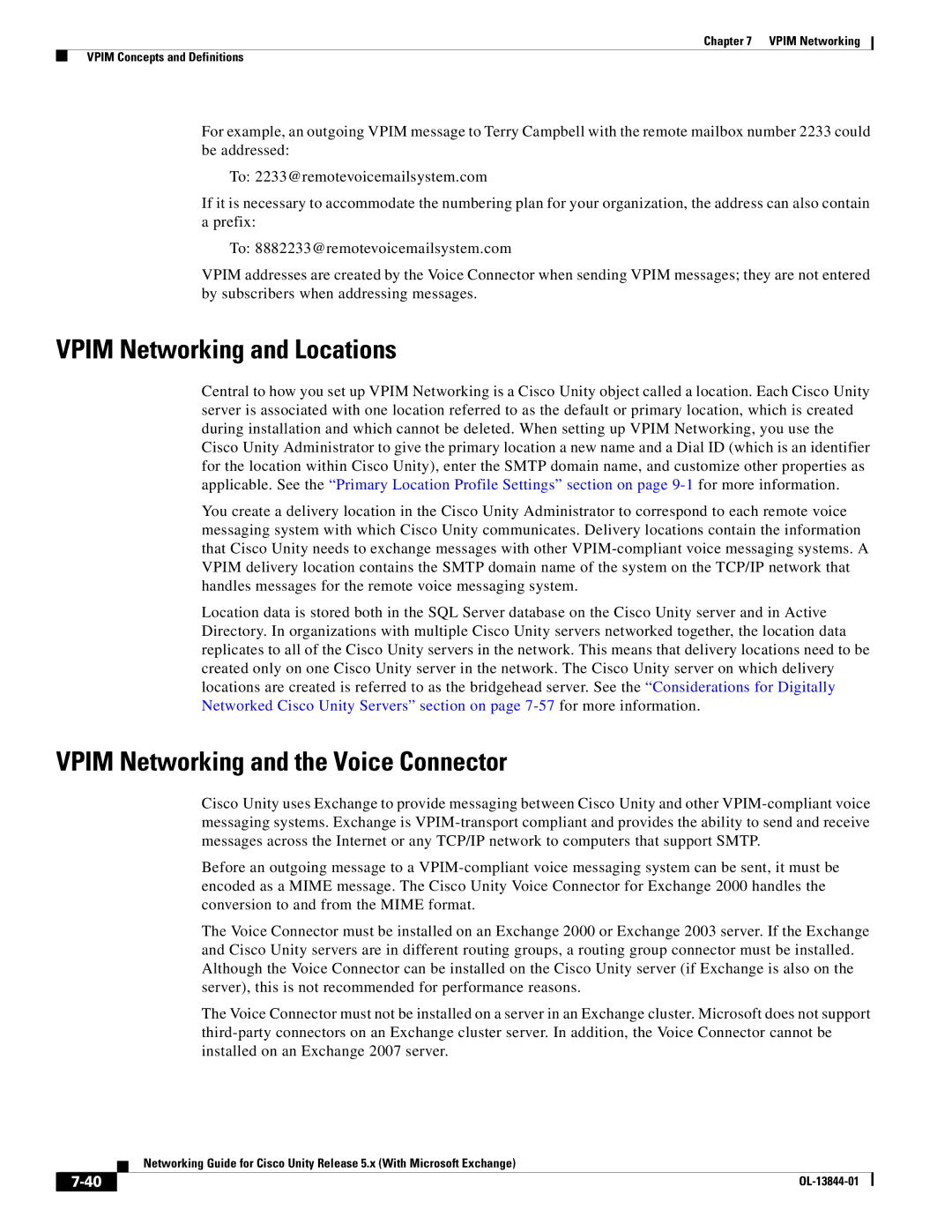
Chapter 7 VPIM Networking
VPIM Concepts and Definitions
For example, an outgoing VPIM message to Terry Campbell with the remote mailbox number 2233 could be addressed:
To: 2233@remotevoicemailsystem.com
If it is necessary to accommodate the numbering plan for your organization, the address can also contain a prefix:
To: 8882233@remotevoicemailsystem.com
VPIM addresses are created by the Voice Connector when sending VPIM messages; they are not entered by subscribers when addressing messages.
VPIM Networking and Locations
Central to how you set up VPIM Networking is a Cisco Unity object called a location. Each Cisco Unity server is associated with one location referred to as the default or primary location, which is created during installation and which cannot be deleted. When setting up VPIM Networking, you use the Cisco Unity Administrator to give the primary location a new name and a Dial ID (which is an identifier for the location within Cisco Unity), enter the SMTP domain name, and customize other properties as applicable. See the “Primary Location Profile Settings” section on page
You create a delivery location in the Cisco Unity Administrator to correspond to each remote voice messaging system with which Cisco Unity communicates. Delivery locations contain the information that Cisco Unity needs to exchange messages with other
Location data is stored both in the SQL Server database on the Cisco Unity server and in Active Directory. In organizations with multiple Cisco Unity servers networked together, the location data replicates to all of the Cisco Unity servers in the network. This means that delivery locations need to be created only on one Cisco Unity server in the network. The Cisco Unity server on which delivery locations are created is referred to as the bridgehead server. See the “Considerations for Digitally Networked Cisco Unity Servers” section on page
VPIM Networking and the Voice Connector
Cisco Unity uses Exchange to provide messaging between Cisco Unity and other
Before an outgoing message to a
The Voice Connector must be installed on an Exchange 2000 or Exchange 2003 server. If the Exchange and Cisco Unity servers are in different routing groups, a routing group connector must be installed. Although the Voice Connector can be installed on the Cisco Unity server (if Exchange is also on the server), this is not recommended for performance reasons.
The Voice Connector must not be installed on a server in an Exchange cluster. Microsoft does not support
| Networking Guide for Cisco Unity Release 5.x (With Microsoft Exchange) |
|
